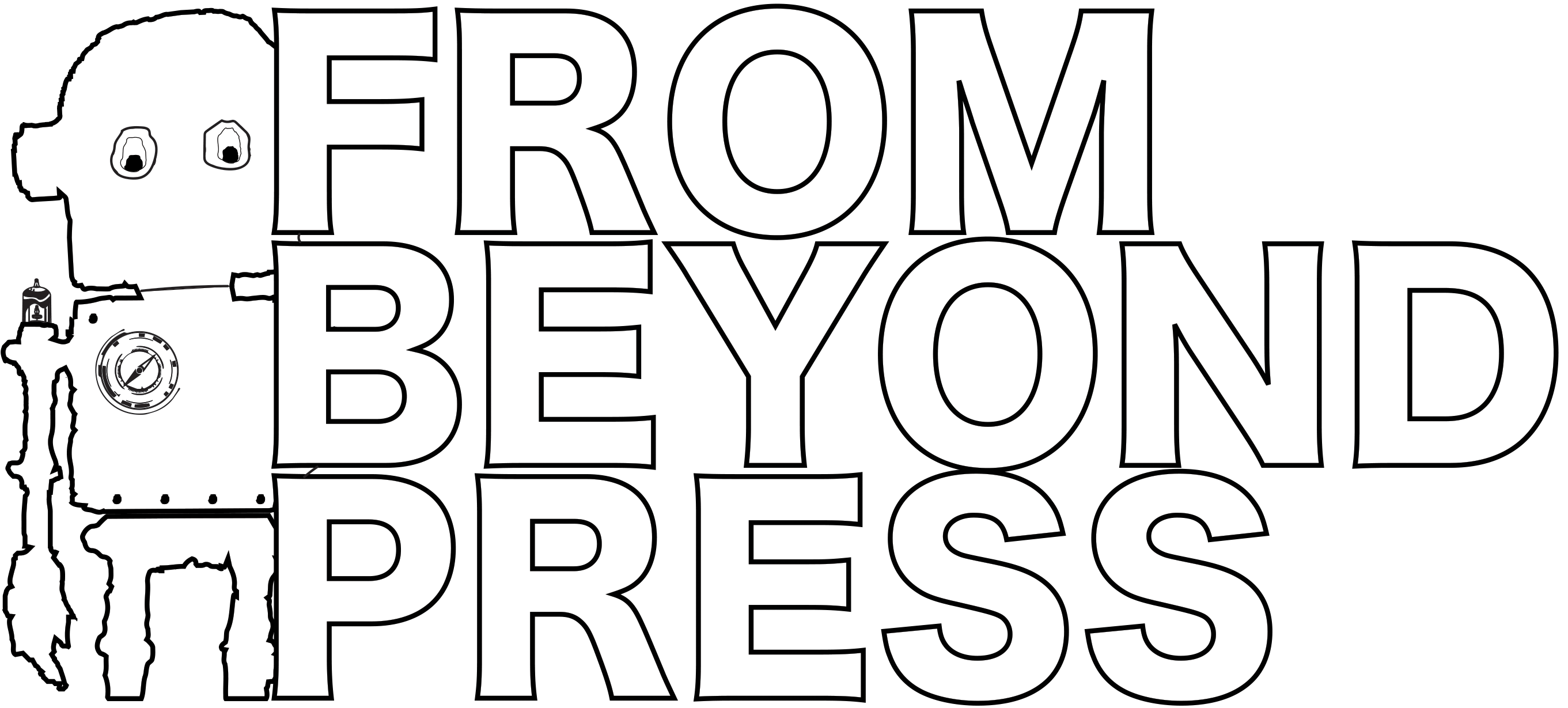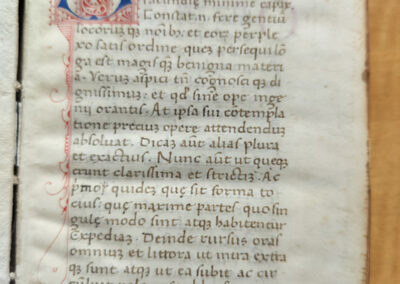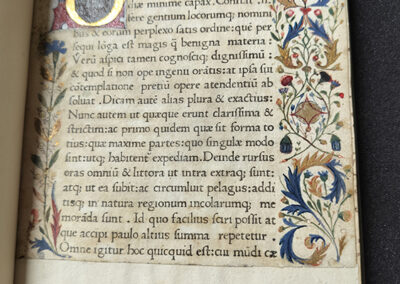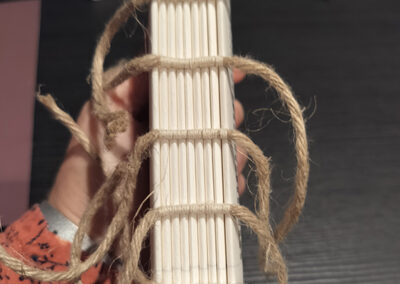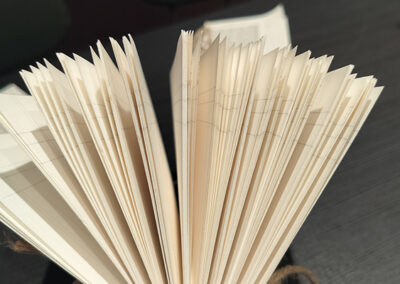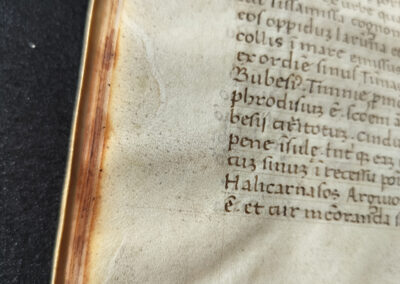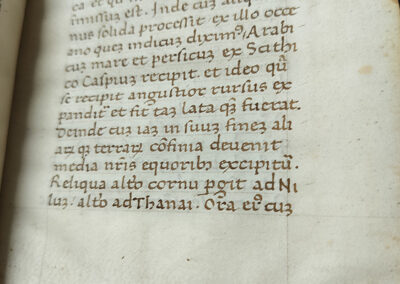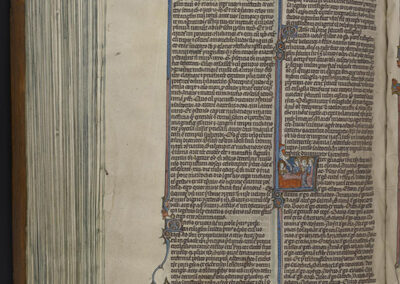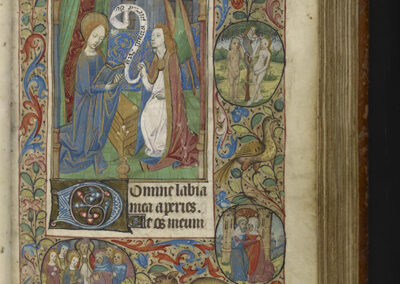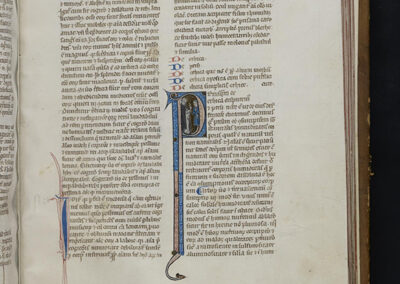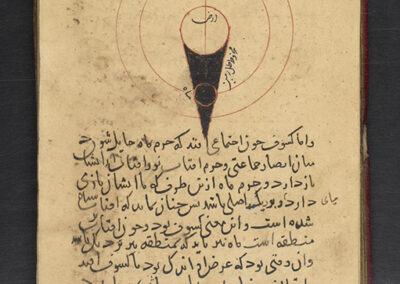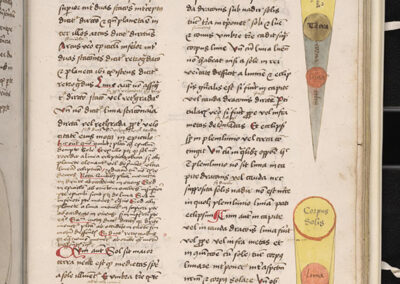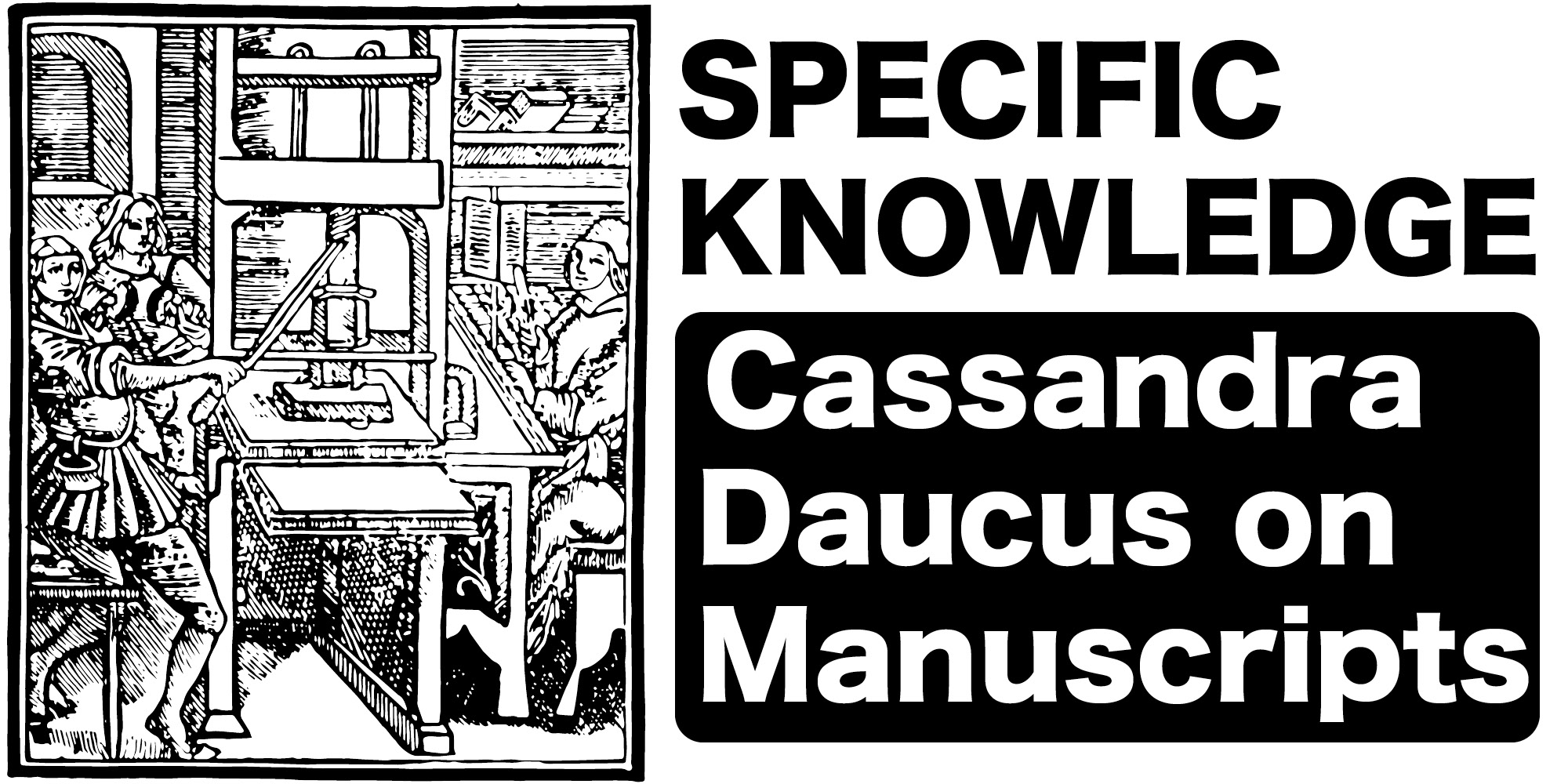Specific Knowledge:
Cassandra Daucus on Manuscripts
As a special collections curator, I work with manuscripts. A lot of manuscripts. So when I read books or watch movies where manuscripts or other types of rare books are featured, I can get pretty critical. That said, in this post I want to stay positive. Rather than pointing out specific instances of things people get wrong when they’re writing about old books, I want to talk about some basic things I want writers to get right.
What is a manuscript and how is it different from a book?
Manuscripts are written by hand (it’s literally in the word: scriptum means written and manu means by hand). If a book isn’t written by hand, it’s not a manuscript. Books might be made using a printing press or by block printing (more common in Asia). These are all very cool, but they aren’t manuscripts.
Addendum: Printed books can have writing in them! The earliest printed books had spaces left for illuminated initials or little paintings (called miniatures), and until very recently people weren’t shy about writing in the margins of books. A book printed in Latin could also have spaces left for Greek or Hebrew words if the printer didn’t have movable type for those alphabets, with the intention that the words would be added by a scribe later.
Fig. 1.1: LJS 60 is a manuscript copy of Pomponius Mela’s Cosmographia, written in Italy sometime between 1440 and 1450.
Fig. 1.2: INC-477 is an incunable (book printed in Europe between 1450 and 1499) of Pomponius Mela’s Cosmographia, printed in Italy in September, 1471. The illuminated initial and the decorative borders are all painted by hand.
Gloves
I said I was going to stay positive, but nothing took me out of Good Omens more quickly than Aziraphale slipping on a pair of white cotton gloves. No rare books specialist regularly wears gloves. I’ve only worn gloves twice in ten years: once, when I was handling a missal written in the early 20th century whose pages had been coated with white lead to prepare it (not a medieval practice), and once when I was handling over 40 books, one after the other, and the conservator I was working with wanted to avoid passing dirt between books. Both times I wore nitrile gloves. Basically, unless there’s something in or on the book that’s going to hurt you (white lead, a poisoned binding, alien spores), you don’t wear gloves. Instead, wash your hands and dry them thoroughly.
If your character is wearing gloves they’d better have a damn good reason.
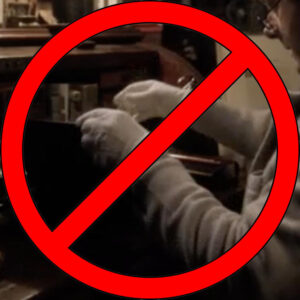
Structure
Books are complex physical objects, and their structure has so much dramatic potential!
Codex structure is probably what most people think of when they think of early books (manuscript or printed). You start with a stack of paper or parchment (usually between three and six sheets), fold the stack down the middle to form a booklet with twice the number of leaves as you have sheets (four sheets = eight leaves). This booklet is called a quire or gathering. Sew multiple quires together at the spine to form the textblock, attach the textblock to a cover, and you have a codex book.
Addendum: It’s a bit more complicated for printed books, where multiple pages are printed on either side of a single large sheet and then folded and cut to make leaves. But the structure of the finished object looks the same.
This means that the vast majority of leaves in a book are physically connected to another leaf that isn’t next to it. Assuming a book is in a reasonable condition, a single page isn’t going to fall out. However, if the threads used to sew the quires together are loose or cut, a whole quire might fall out. Or a bifolio (two connected leaves, a folded sheet) might fall out. Imagine a book falling to the floor, the loose threads snapping, and sheets (not pages!) cascading across the floor.
Sure, sometimes a leaf is cut out, leaving a single leaf on the other side, or individual leaves are bound in (this in particular can happen with fancy illuminated pages, which are sometimes painted separately from the text pages, and then sewn into the quire). But it’s a bit unusual—and we all know how authors like playing with things that are unusual.
Hint, hint.
Of course, the codex is just one manuscript format. There are also vertical rolls and horizontal scrolls, which are made of sheets (called membranes) sewn or glued end-to-end to form a long structure. Rolls are especially useful for things like genealogies that have continuous family tree diagrams; they were also used for magical or otherwise ritualistic texts.
Parchment and Paper
The vast majority of manuscripts are written on either parchment or paper.
Parchment is made of animal skin that’s put through a frankly disgusting and laborious process that includes soaking in lye, stretching, and scraping with a blade. Depending on geography, parchment might be made of calfskin, sheepskin, or goatskin (alternative materials are left up to your imagination). Another term you might have heard is vellum; technically vellum means parchment that’s made of calfskin, although some people use it to mean high-quality parchment.
Parchment is strong. Unless it’s very thin (a general sign of high quality), it’s not ripping. Thicker parchment is really tough (and crackles delightfully). If you want to cut parchment, you need a blade.
Even lower quality parchment would have been expensive. Cheaper parchment might include the stretched edges, or holes left where the animal had bug bites. You can often tell which side was inside the animal (flesh side) and which was outside (hair side) because the hair side is darker and has visible hair follicles, while the flesh side is lighter and feels smoother to the touch. Higher-quality parchment is more likely to be the same on both sides.
Parchment is so durable that it can be reused, the ink washed or scraped off and then written over again. This results in a palimpsest. The most famous example is probably the Archimedes Palimpsest, but it’s a common enough practice that we have several in our collection where the undertexts (probably magical incantations) haven’t been identified.
And then there’s paper. Paper was less expensive than parchment, and although early paper was stronger than, say, 19th century paper (being made of linen rags instead of wood pulp), it isn’t as strong as parchment—it’s pretty easy to rip. While the tactile experience of old paper would be familiar to most of us, the process of making each sheet left a literal imprint. Sheets were made by dipping a wire frame into a slurry; the frame not only had lines running vertically and horizontally, but would usually have a decoration in the wire in the very center of the sheet. That decoration leaves a thin area called a watermark, which can be used to trace paper distribution and to transmit curses, if one is so inclined.
Contents & Aesthetics
If you’re going to write about a genre of text, you need to do research into what manuscripts of that genre contain and look like in the place and time you’re writing about. Some genres of book are liable to be illustrated richly (Bibles, books of hours), while some are more likely to be simple penwork (scientific treatises, medical books)–but there are always outliers. Astronomical manuscripts have diagrams that are extremely similar no matter where and when they’re made, although the general appearance of the book will depend on where and when it was made. For example, 15th century German books have a much different “look” than 13th century French ones.
If you’d like to know more, check out the links in my bio below, or send me a message. I’m always happy to talk about manuscripts!
Cassandra Daucus writes horror. Cassandra is very slowly working on a collection of manuscript-inspired horror stories. You can read her story The Hedgehog Hours in the first issue of The Hog Literary Magazine. Find links to Cassandra’s social media and website here.
Cassandra Daucus is the pen name of Dot Porter. Dot is the Curator of Digital Humanities at the Schoenberg Institute for Manuscript Studies, University of Pennsylvania Libraries. Dot hosts the weekly Coffee With A Codex online events and her exhibition The Movement of Books will be on display in the Goldstein Gallery, Van Pelt Library, from August 30 to December 13. You can find out more about her work at her website.
